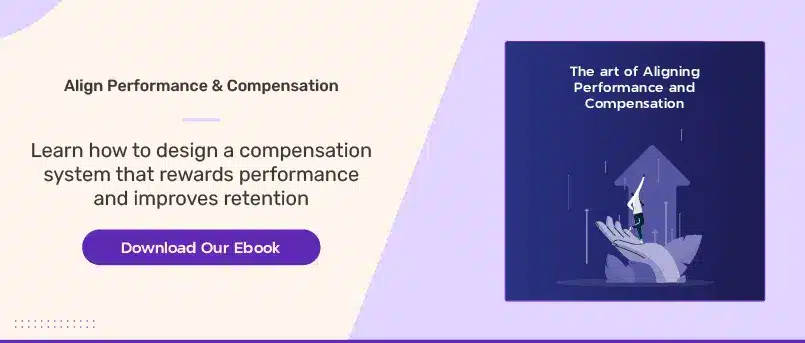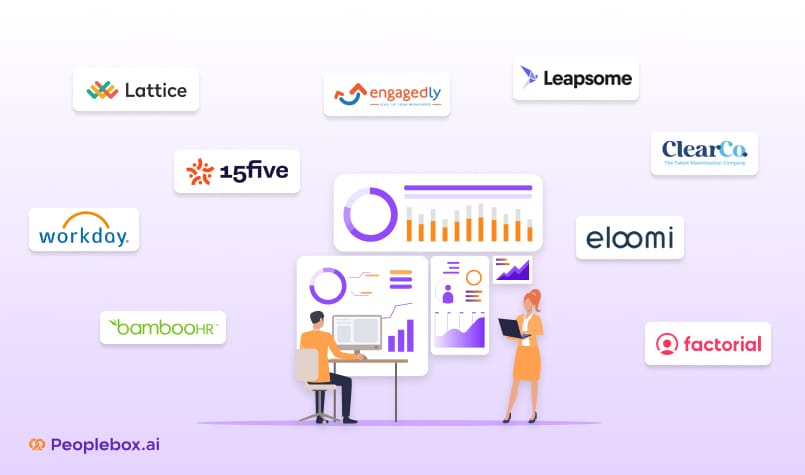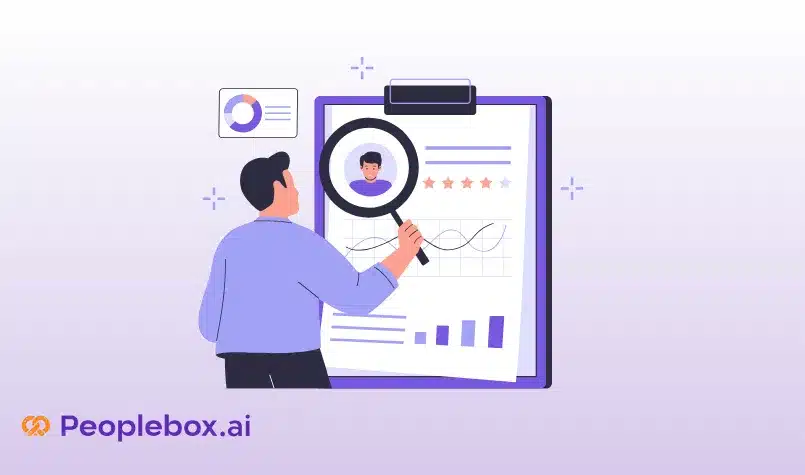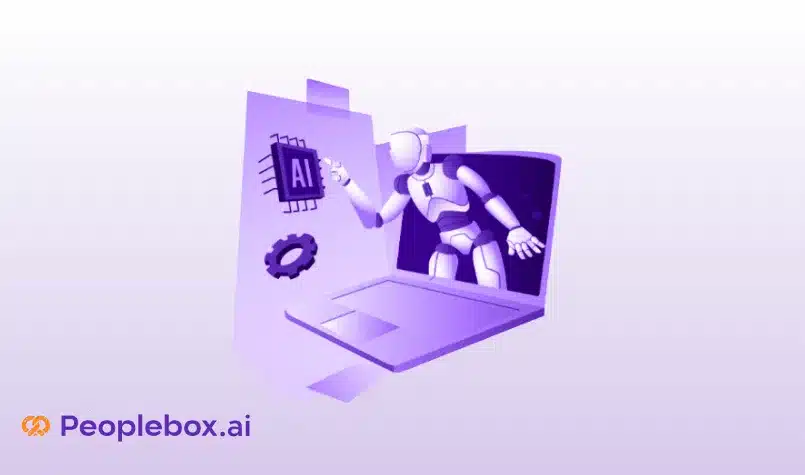3 to 4 million employees quit every month in the United States. Though this number will change based on what industry you’re looking at, employee turnover is at a general all-time high, gradually increasing by the year.
Interestingly, studies also show that 94% of employees embrace learning opportunities and say that flexibility is the number one criterion they look for when hunting for a job.
Is there a connection? It’s clear that employees still care, and yet the rate of quitting gets higher by the year.
Companies that care—and invest in strategic retention plans—will manage to hold on to their employees while others will not. They’ll reach their business goals faster, while their competitors are permanently stuck in a hiring and re-hiring cycle.
In this quick guide, we share 20 employee retention strategies to help you get started on building a better workplace.

What are the Consequences of a High Turnover Rate?
Before diving into retention strategies, let’s explore the real cost of a revolving door workforce. Here’s how high turnover can cripple your organization:
Lost Expertise: When skilled employees leave, they take valuable knowledge, ideas, and experience with them. This leads to workflow disruptions, project delays, and a decrease in the overall quality and quantity of work produced.
New Hire Hurdles: The onboarding process for new employees takes time. They need to get up to speed on processes, company culture, and specific projects. This period of decreased productivity is even more significant for complex or high-level positions.
Demoralized Teams: High turnover can have a domino effect on morale. Remaining employees often face increased workloads as they cover vacant positions. This, coupled with the loss of a valued colleague, can make them less engaged and productive.
Recruitment Costs: The cost of acquiring new talent goes beyond advertising, interviewing, and background checks. The time spent recruiting could be better invested in employee development and strategic initiatives.
Strained Budgets: Frequent personnel changes put a strain on your organization’s budget. These costs can be avoided with an effective retention strategy.
Let’s now look at 20 such talent retention strategies you can leverage right away!

20 Easy Employee Retention Strategies
Talent Retention Strategies for Building a Strong Foundation
Before you dive deep into crafting effective employee retention strategies, make sure you get the basics right.
Offer competitive pay and benefits
Pay salaries that keep up with or surpass market norms. Make healthcare, insurance, or disability coverage available to all employees, irrespective of their rank in the company. Ensure that employees’ physical, emotional, and financial well-being is covered by an all-inclusive benefits program. Perks like health clubs and reimbursements for tuition also help.

Invest in a culture of appreciation
This is simple — reward accomplishments. Whether it is monetary rewards, public acknowledgment, or direct appreciation from management, these small changes snowball into better employee satisfaction.
Prioritize work-life balance and flexibility
Allow people to work from home, or compress the normal work week into a 4 day work week. The added advantage of this is that it opens up the job market so you can access talent for whom flexible work arrangements are non-negotiable. If you’re wondering whether this would lead to lower productivity, check out our blog post on the 4 day work week.
It’s also a good measure to make it a rule that employees are not to be contacted during vacation time or outside regular hours for work, to allow them to fully decompress from a day of work.
Dedicate time to diversity and inclusion
Build a culture that respects a variety of cultures, ideas, and appearances. Make hiring, promotion, and compensation decisions that are fair and objective, and clearly record them. Train managers to make unbiased decisions and discuss ways to improve diversity and inclusion in the workplace.
Be transparent with communications
Seek employee input where it concerns them, and be proactive in briefing them about major workplace decisions. Encourage regular discussion between managers and their subordinates, instead of treating every interaction as a performance review.
With performance management platforms like Peoplebox, you can set up 1:1 discussions within seconds.
Employee Retention Tactics for Fostering Growth and Career Development
When you want to keep your best people, enabling professional growth can be just as important as offering competitive compensation packages with great employee benefits.
Employees are more likely to stick with an organization that invests in their progress. Here are a few of the key strategies to achieve this:
Create clear-cut career paths
Motivated employees need clear internal career ladders. Map potential career trajectories for each job level to make it easy for employees to see themselves in the company’s long-term future. Very few companies do this, so their employees begin to view leaving the company for a more senior role as the only route to progress.
When you’re just starting out, or entering a new industry, it can be very difficult to gauge what your next steps should be, any guidance that the workplace can offer in this regard is never not welcome. To boost employee retention rate in a way that is hard to compete with, offer tuition reimbursement to current employees who need to learn new skills.
Another effective way to help employees figure out their career paths and how dexterous they are in their current roles is to match junior employees with senior management guidance. It’s important to assess who these mentors will be, you want them to be talented and experienced, but not so busy that they wouldn’t find the time to do the mentorship justice.
An added benefit of this is that if there are any existing skill gaps in an employee’s current role, these will likely be filled too, increasing overall productivity in the long run. Promote internally when possible, to make it clear that career progression is not just a concept in your company, but a practice.
Conduct performance reviews
Establish a comprehensive performance management system that goes beyond annual evaluations. Schedule frequent check-ins and feedback sessions, and employee surveys to make it easy for managers to provide timely, concrete guidance on strengths, and areas where improvement is needed, and help employees progress toward goals.

Create a culture of continuous learning
Empower employees to take control of their own development through access to online course libraries, a budget for professional development, and internal training programs. Encourage staff to devote time to learn and talk about their development goals with managers.
Recognize and reward employees who seek out new knowledge generally, this will highlight the importance your organization attaches to learning.
Assign stretch assignments and challenges
You can keep high-performing employees motivated by giving them assignments that are outside their comfort zone. This could mean leading a digital team project, with an opportunity to partner up between groups or even tackling tougher business problems that lie on the periphery of the firm’s operations.
Performance management platforms like Peoplebox help you categorize employees by performance and potential in a 9 box grid, allowing for strategic development plans.

Encourage ownership of individual roles
Delegate serious tasks and projects instead of assigning only repetitive work to employees. This is easier said than done, it can be difficult to not take over a project if you see an employee struggling with it, especially if you know you’d be able to do it quicker and better.
Encourage upward feedback and give employees outlets to share their observations and suggestions while these tasks are being completed. If you grant your employees authority in terms of how a job is done, while providing the necessary support and guidance, you’d be able to produce much higher morale and job satisfaction at work.
Employee Retention Strategies for Prioritizing Well-being
No employee will want to remain at a workplace that causes constant burn-out and shows no concern for their well-being. Here are a few strategies to become a workplace that cares about its employees.
Provide mental health resources
Assessing how your employees are doing mentally is important, but it’s important to involve the experts in this. You can conduct workshops about mental health and convey how you feel about employees going to therapy, this will help remove the stigma attached to getting help to deal with psychological issues.
As a next step, subsidize mental health care the same way you would with a gym membership. Try looking for health insurance plans that cover going to therapy, and set aside a budget for employees to spend on therapy and other mindfulness remedies every month.
Include access to Employee Assistance Programs (EAPs)
These are indispensable assets in the support of employee well-being and retention. They offer workers confidential counseling and support for a broad range of personal and work-related issues, from managing stress on the job to coping with relationship problems or substance abuse.
You should actively publicize the services offered by EAPs and guarantee that workers feel safe in using EAP services without fear of being judged or punished by management.
Create a positive work environment
Encourage an atmosphere of respect, inclusiveness, and openness toward each other so that employees feel like they are part of a community. Promote regular social activities for teams, such as outings or non-profit community service opportunities.
Mediate conflicts in the workplace and train managers to be better at seeking out fair solutions to each problem. This prevents an unhealthy atmosphere by not letting workplace conflicts hang in the air for too long.
Employee Retention Strategies for Building a Strong Community
A sense of camaraderie will help your employees feel enthusiastic about coming to work every day. How do you build this? Follow these strategies:
Organize team-building activities
Our advice would be to go the simpler route with team-building activities, like a pizza party on Fridays or arranging dinner and drinks a couple of times a month to boost employee morale. A well-executed team lunch is more than enough to get people to talk and get along. Why the simpler route? Loud, complicated events that push employees into “activities” they are not comfortable with will simply mean more people choose to sit out of these events. You shouldn’t organize events that eat into their personal lives either, like mandating employees come in for an office party on the weekend.
Remember to involve your remote employees in your team-building activities. Plan off-site and other remote work events to maintain employee loyalty.
Initiate Employee Resource Groups (ERGs)
ERGs are voluntary, employee-led groups that meet for activities, support, and learning. Members share characteristics such as ethnicity and experience with other individuals in the organization or industry, like women in leadership, LGBTQ+ allies, and multicultural groups.
By establishing and supporting ERGs, organizations show that they are committed to creating a friendly and inclusive workplace community.
Make social recognition easy
Implement social recognition platforms or programs that allow employees to publicly acknowledge and show appreciation for their coworker’s contributions. This can be done in various ways, such as virtual kudos boards (although there are more sophisticated tools now), or personal thank-you cards. Social recognition helps foster inter-department cooperation.
Open up communication channels
Employees should feel they can trust their own ideas and that they can speak up if something is wrong, without fear of consequences. Pulse surveys and regular sit-downs would help do this. However, of all these tools the most important one is open dialogue in the company culture. You have to welcome employee feedback, deal with problems immediately, and explain how employee’s comments are driving change in the organization.

Employee Retention Strategies for Going the Extra Mile
Now that the basics are taken care of, like adequate compensation and a sense of comfort in the workplace, how do you push your employees to push themselves to do their best without employee burnout becoming a part of the workplace culture? Here are a few strategies to get you started.
Make it easy to find purpose in the workplace
Employees are looking for deeper value in the work that they do, and want to work with companies that share their purpose. Help your organization clearly outline its mission and connect how your employee’s work ties in with that mission.
Not doing so will result in apathy about the work that they are doing.
Create a positive work environment
This goes beyond ergonomic workstations and break rooms. Implement even entirely novel perks or initiatives that make the workplace more attractive, lively, and manageable, and boost the retention rate.
- For instance, offering on-site amenities like nap pods, or game rooms allows employees to better integrate their work and personal lives and decrease stress.
- Provide healthy snacks, on-site fitness classes, or massage services to show your organization’s commitment to employee wellness.
- Organize regular social events such as happy hours, team outings, or holiday celebrations to build a sense of community and fun.
Creating an environment that the staff looks forward to arriving in each day helps organizations improve retention and engagement overall.
Offer volunteer opportunities
Provide employees with the opportunity to give back to their communities and participate in social responsibility programs to promote meaning and fulfillment. Host company-sponsored volunteer events — community clean-ups, mentoring programs, or fundraisers for local charities — helps employees make a favorable social impact and get closer to their co-workers.
Organising volunteer activities in line with employees’ core values can provide a deeper sense of meaning and attachment to the workplace.
Build a thriving Workforce with Peoplebox
Peoplebox provides a comprehensive suite of tools to cultivate a thriving and engaged workforce. With clear goal setting, actionable employee engagement insights, and personalized development opportunities, you can retain top talent and unlock their full potential. Take control of your employee retention strategy today. See how Peoplebox can transform your workplace. Talk to us today!







